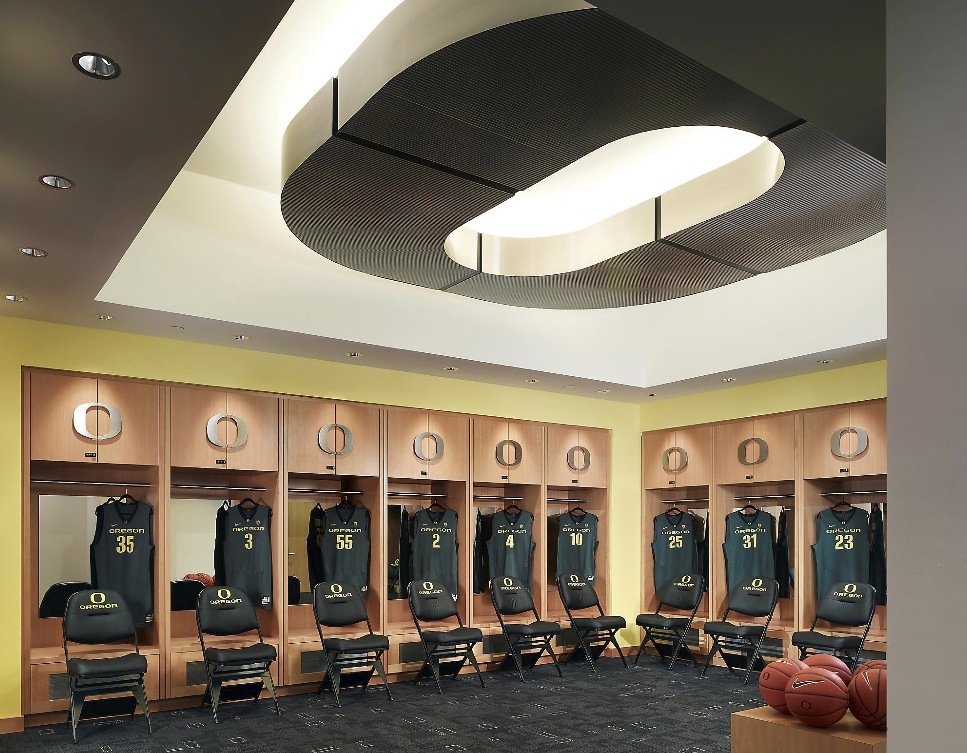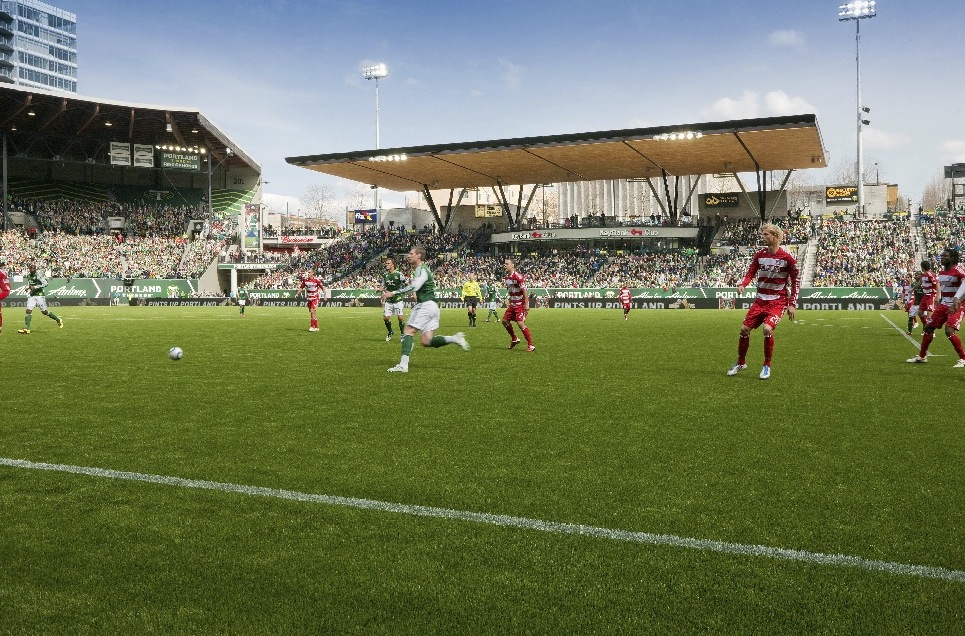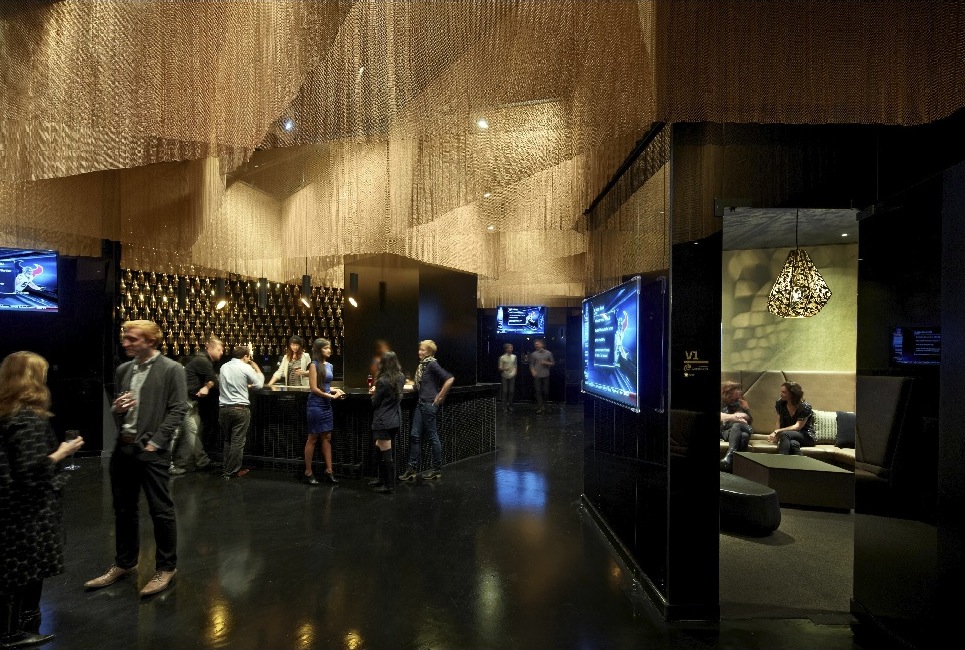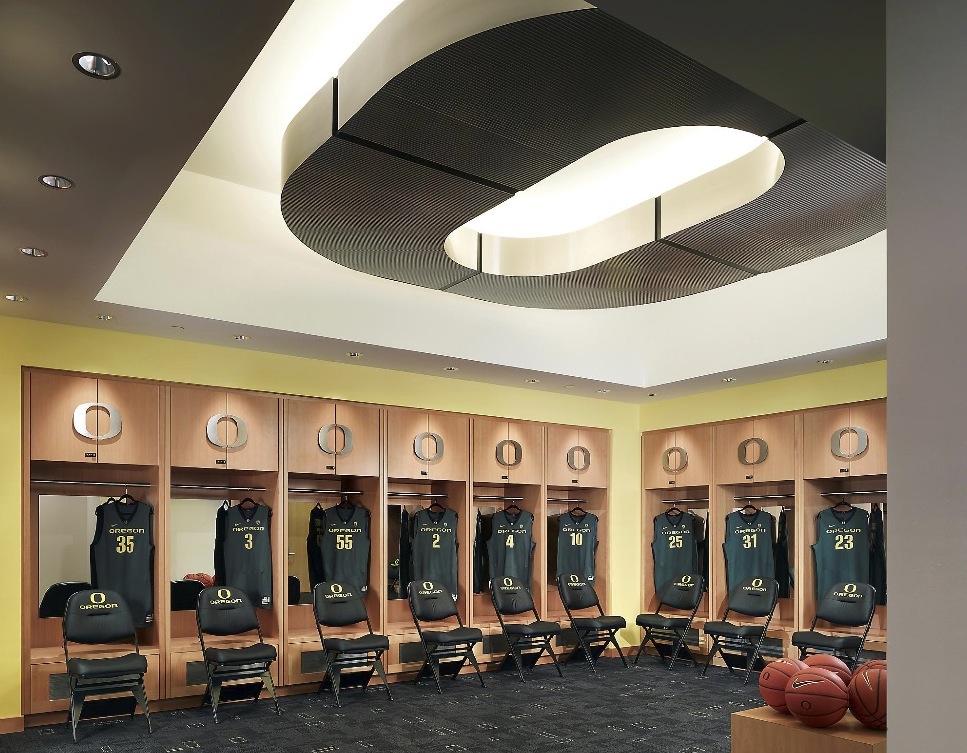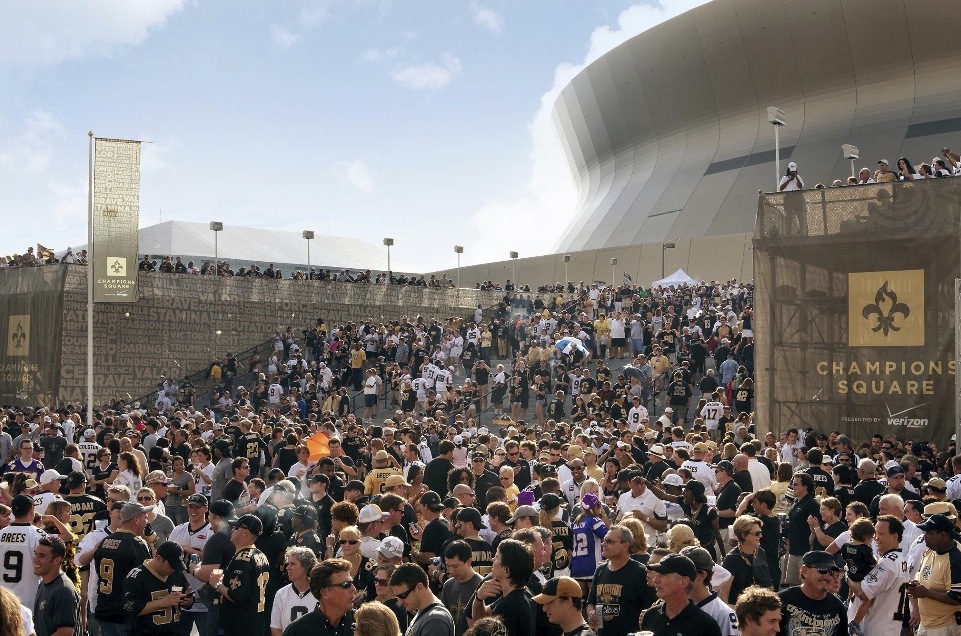When sports teams travel to a game, they battle fatigue, strange surroundings, and thousands of hostile, roaring fans. The home team meanwhile, rested, confident in their city and familiar with the facility, rides the fan energy that rocks their building when they step onto the field or court.
Home advantage can play a significant role in game outcomes. Players talk about it, coaches plan for it, Vegas odds makers calculate it. Team owners even ask architects to maximize it.
Here are six ways AEC firms can help create the conditions that draw big crowds, energize the home team to perform better, and disrupt visiting players:
1. Bring the fans in close
The closer the fans are, the more the players hear the noise, see the enthusiasm, and feel the energy. Venues can be designed to place stands as close to the court or field as possible, and steep-pitched seating bowls can bring the back rows closer to the action. The result: home teams feel the energy of the crowd as an extra player, while visiting teams must battle the added aural and visual distraction.
At JELD-WEN Field, seating extends to within fifteen feet of the pitch, and many fans stand and cheer virtually the entire game. After the Timbers’ home opener victory, head coach John Spencer said, “I don’t think you’ve seen an atmosphere like that in American soccer history. Ever. I think it was tremendous.”
2. Make it loud
Acoustic design maximizes the crowd’s ability to drown the opposing team in roaring noise, disrupt their communication and intimidate them. CenturyLink Field, home of the NFL Seattle Seahawks, has been dubbed the “loudest stadium in the NFL” thanks to a design that focuses crowd noise onto the field.
Foot stomping on the steel stands has been recorded by seismographs at comparable levels to a mini-earthquake. Over a 10-year period, there were 143 false-start penalties on visiting teams in Seattle, the most of any open-air stadium. During the home opener against the San Francisco 49ers on September 15, 2013, CenturyLink will be the site of an attempt sponsored by a fan group to break the Guinness World Record for loudest stadium crowd.
3. Make it easy to get there
How easily fans can travel to a venue is a big factor in filling the seats. Placing the venue in a centralized location well served by mass transit makes it more accessible. Brooklyn’s new sports and entertainment destination, Barclays Center, is one of the few urban venues in the U.S. with no dedicated parking. Instead, the arena can be reached by 11 subway lines, the Long Island Rail Road, and 11 bus lines. In their first season at Barclays Center, the Brooklyn Nets traded years at the isolated, and largely empty, Meadowlands Arena (and a two-year stint in Newark) for a packed house in a hot spot—and their first winning season in seven years.
In downtown Portland, Oregon, JELD-WEN Field, home of the MLS Portland Timbers, also has no dedicated parking, but receives extra service from the local metro system on game days. To sweeten the deal, season tickets—which have sold out every year since the renovated stadium opened and have a waiting list of thousands—include a transit pass.
4. Make it the place to be
More people in the building means more energy. Barclays Center demonstrates the difference between a typical sporting venue and an urban focal point where sports are the anchoring attraction. Home to the NBA Brooklyn Nets and soon the NHL New York Islanders, Barclays Center was designed to include amenities that broaden the appeal — four bar-lounges, three clubs, and the 40/40 CLUB & Restaurant by American Express make the venue a hotspot for nightlife and keep the place buzzing with celebrities and fans. In the Nets’ first season in the new facility, ticket sales increased 23 percent over the previous year, jumping from dead last over half of the teams in the league.
5. Make the home team feel at home
The quality of team amenities like locker rooms and training facilities makes a big difference in a team’s morale and self-image, which players carry into the field and into every play. Ultra-modern technology, high-end design finishes, and institutional identity imagery all contribute to athletes’ sense of belonging—in a facility, in a tradition, and in contention for their league’s highest honors. When the University of Oregon created the Matthew Knight Arena to replace a legendary basketball temple, it was critical that the facility modernize to the utmost while embodying the legacy of the previous building and the Ducks.
6. Get people excited
Venues that combine iconic architecture, local flavor and active public spaces give fans a stronger sense of connection and excitement. The dramatic post-Hurricane Katrina restoration of the Louisiana (now Mercedes-Benz) Superdome in New Orleans forever connected city and venue, building a reputation as one of the toughest away-game locations in the NFL. In 2010 the owners went a step further, adding Champions Square, a new public space conceived as the venue’s “front porch.” Designed in the tradition of New Orleans’ famous public squares, Champion Square hosts concerts prior to games, with the street festival atmosphere brewing excitement until fans fill the stadium and create what has been called the best home field advantage in the NFL.
Related Stories
| Oct 13, 2010
Campus building gives students a taste of the business world
William R. Hough Hall is the new home of the Warrington College of Business Administration at the University of Florida in Gainesville. The $17.6 million, 70,000-sf building gives students access to the latest technology, including a lab that simulates the stock exchange.
| Oct 13, 2010
Science building supports enrollment increases
The new Kluge-Moses Science Building at Piedmont Virginia Community College, in Charlottesville, is part of a campus update designed and managed by the Lukmire Partnership. The 34,000-sf building is designed to be both a focal point of the college and a recruitment mechanism to get more students enrolling in healthcare programs.
| Oct 13, 2010
Cancer hospital plans fifth treatment center
Construction is set to start in December on the new Cancer Treatment Centers of America’s $55 million hospital in Newnan, Ga. The 225,000-sf facility will have 25 universal inpatient beds, two linear accelerator vaults, an HDR/Brachy therapy vault, and a radiology and imaging unit.
| Oct 13, 2010
Apartment complex will offer affordable green housing
Urban Housing Communities, KTGY Group, and the City of Big Bear Lake (Calif.) Improvement Agency are collaborating on The Crossings at Big Bear Lake, the first apartment complex in the city to offer residents affordable, eco-friendly homes. KTGY designed 28 two-bedroom, two-story townhomes and 14 three-bedroom, single-story flats, averaging 1,100 sf each.
| Oct 13, 2010
Residences bring students, faculty together in the Middle East
A new residence complex is in design for United Arab Emirates University in Al Ain, UAE, near Abu Dhabi. Plans for the 120-acre mixed-use development include 710 clustered townhomes and apartments for students and faculty and common areas for community activities.
| Oct 13, 2010
HQ renovations aim for modern look
Gerner Kronick + Valcarcel Architects’ renovations to the Commonwealth Bank of Australia’s New York City headquarters will feature a reworked reception lobby with back-painted glass, silk-screened logos, and a video wall.
| Oct 13, 2010
New health center to focus on education and awareness
Construction is getting pumped up at the new Anschutz Health and Wellness Center at the University of Colorado, Denver. The four-story, 94,000-sf building will focus on healthy lifestyles and disease prevention.
| Oct 13, 2010
Community center under way in NYC seeks LEED Platinum
A curving, 550-foot-long glass arcade dubbed the “Wall of Light” is the standout architectural and sustainable feature of the Battery Park City Community Center, a 60,000-sf complex located in a two-tower residential Lower Manhattan complex. Hanrahan Meyers Architects designed the glass arcade to act as a passive energy system, bringing natural light into all interior spaces.
| Oct 13, 2010
Community college plans new campus building
Construction is moving along on Hudson County Community College’s North Hudson Campus Center in Union City, N.J. The seven-story, 92,000-sf building will be the first higher education facility in the city.
| Oct 13, 2010
Bookworms in Silver Spring getting new library
The residents of Silver Spring, Md., will soon have a new 112,000-sf library. The project is aiming for LEED Silver certification.


